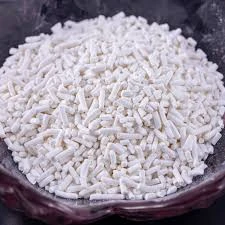
Uses and Benefits of Isopropyl Alcohol in Daily Life
Understanding Isopropyl Alcohol The Versatility of 2-Propanol
Isopropyl alcohol, commonly known as 2-propanol or isopropanol, is a colorless, flammable chemical compound with a distinctive odor. It is a member of the alcohol family and is widely used in various industries and households due to its versatile properties. This article will delve into the characteristics, applications, and safety considerations associated with isopropyl alcohol.
Chemical Properties
Isopropyl alcohol has the chemical formula C3H8O, indicating that it consists of three carbon atoms, eight hydrogen atoms, and one oxygen atom. It is a secondary alcohol, meaning that the hydroxyl group (-OH) is attached to a carbon atom that is itself attached to two other carbon atoms. This structure contributes to its solvent characteristics, making it an effective carrier of other substances. Isopropyl alcohol has a boiling point of about 82.6°C (180.7°F) and a melting point of -89°C (-128°F), allowing it to remain in liquid form under a wide range of temperatures.
Uses of Isopropyl Alcohol
One of the most common uses of isopropyl alcohol is as a disinfectant. It is a key ingredient in many household and industrial cleaning products, particularly in the context of sanitizing surfaces and equipment. The Centers for Disease Control and Prevention (CDC) recommends using isopropyl alcohol with at least 70% concentration for effective disinfection of surfaces to eliminate bacteria and viruses, especially important in healthcare environments during disease outbreaks.
In addition to its disinfectant properties, isopropyl alcohol is also utilized in the cosmetic industry. It is often found in products such as hand sanitizers, lotions, and aftershaves due to its ability to dissolve oils and prevent microbial growth. Its quick evaporation rate allows for a swift drying process, making it an appealing choice for personal care formulations.
isopropyl alcohol 2 propanol

Furthermore, isopropyl alcohol serves as a solvent in various applications. It can dissolve a range of substances, including oils, resins, and colorants, which makes it valuable in laboratories, paint thinners, and manufacturing processes. Additionally, in the electronics industry, isopropyl alcohol is used for cleaning electronic components due to its non-conductive nature.
Safety and Handling
While isopropyl alcohol is beneficial in many applications, it is essential to handle it with care. Being highly flammable, it poses a fire hazard and should be kept away from open flames and sparks. Proper ventilation is crucial when using isopropyl alcohol, as inhaling its vapors can lead to respiratory irritation and dizziness. Moreover, it can cause skin and eye irritation, underscoring the importance of wearing protective gloves and eyewear during use.
It is important to note that isopropyl alcohol is toxic when ingested. Consumption can lead to serious health issues, including central nervous system depression and potentially fatal outcomes. Therefore, it should never be stored near food or beverages and kept out of reach of children.
Conclusion
Isopropyl alcohol is a versatile compound that plays a significant role in various sectors, from healthcare to beauty and industrial applications. Its disinfectant properties, ability to act as a solvent, and wide range of uses highlight its importance in modern society. However, while utilizing isopropyl alcohol, one must remain vigilant about safety measures to prevent potential hazards associated with its flammable and toxic nature. Understanding these factors ensures that isopropyl alcohol can be used effectively and safely, maintaining its status as a vital chemical in everyday life.
-
Sodium Dichloroisocyanurate Safety Handling ProtocolsNewsJul.29,2025
-
Mining Chemicals for Copper Extraction Processes GuideNewsJul.29,2025
-
Fertilizer for Sale Shipping and Storage TipsNewsJul.29,2025
-
Dimethyl Disulfide as Sulfurizing AgentNewsJul.29,2025
-
Benzotriazole Safety Data Handling and Storage GuidelinesNewsJul.29,2025
-
Ammonium Bicarbonate Safety Handling Storage GuidelinesNewsJul.29,2025
-
The Transformative Role Of Trichloroisocyanuric Acid in Water TreatmentNewsJul.23,2025
Hebei Tenger Chemical Technology Co., Ltd. focuses on the chemical industry and is committed to the export service of chemical raw materials.
-

view more DiethanolisopropanolamineIn the ever-growing field of chemical solutions, diethanolisopropanolamine (DEIPA) stands out as a versatile and important compound. Due to its unique chemical structure and properties, DEIPA is of interest to various industries including construction, personal care, and agriculture. -

view more TriisopropanolamineTriisopropanolamine (TIPA) alkanol amine substance, is a kind of alcohol amine compound with amino and alcohol hydroxyl, and because of its molecules contains both amino and hydroxyl. -

view more Tetramethyl Thiuram DisulfideTetramethyl thiuram disulfide, also known as TMTD, is a white to light-yellow powder with a distinct sulfur-like odor. It is soluble in organic solvents such as benzene, acetone, and ethyl acetate, making it highly versatile for use in different formulations. TMTD is known for its excellent vulcanization acceleration properties, which makes it a key ingredient in the production of rubber products. Additionally, it acts as an effective fungicide and bactericide, making it valuable in agricultural applications. Its high purity and stability ensure consistent performance, making it a preferred choice for manufacturers across various industries.











